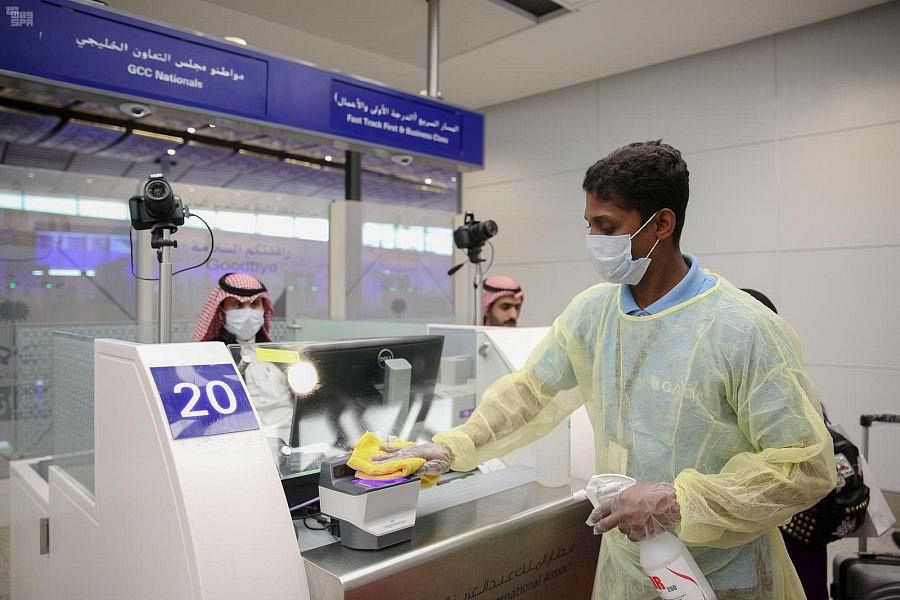
When Everton football club kicked off its latest project to build a new stadium, its owner, Farhad Moshiri, promised supporters he would do whatever it took to get it built.
“I’ll throw as much money as needed,” the businessman told the club’s annual meeting in 2019. “It is no luxury, we have to get it done. If we want to have a big club we need a modern stadium and we will get it.”
The £500m project represented the club’s latest effort to leave its famous, if creaking, Goodison Park home – where one of the original 12 founding members of the Football League first played in 1892.
Previous attempts to move, dating back to the 1990s, had been aborted. But, as Moshiri addressed supporters and shareholders, Everton fans felt reassured, as they now had an owner whom the Sunday Times Rich List valued as a billionaire plus the backing of a city council promising a £280m loan to help fund the project. Many must have believed that their once glorious club, which last lifted a trophy by winning the FA Cup in 1995, was finally on the brink of a new dawn.
Only now – with Moshiri reportedly in talks to sell a stake in the club and problems mounting at Goodison Park – some fans are debating if that new dawn may turn into a false one.
The chosen new site at Bramley-Moore Dock – the northernmost point of the Liverpool Maritime Mercantile City – was cited by Unesco as one reason for stripping the city’s historic trading zone of its world heritage site status in 2021.
Then, an agreed £30m naming rights option for the new stadium with Moshiri’s long-term business partner, Alisher Usmanov, was cancelled – after the oligarch was sanctioned in March following Russia’s invasion of Ukraine.
But, perhaps most significant of all, Everton backed away from the 2018 local authority funding deal and, in May 2022, Everton agreed to pay £502,000 of the £841,000 in costs Liverpool city council expended in exploring the loan.
The events surrounding that deal also drew official scrutiny from Liverpool city council commissioners, who were imposed by central government last year to oversee improvements at the local authority. They concluded that local officials had “incurred significant expenditure to investigate the possibility of a loan to EFC without any formal approval and without any budget provision approval”.
All of this raises questions about the new 52,888-seat stadium and how this grand old football club is financed.
No backers
Everton has been attempting to find financial backers to build its new stadium for years – eventually hiring the US investment bank JP Morgan and Japan’s largest bank, MUFG, to help raise the £500m required in January 2020.
Despite those two financial institutions searching for funds, financial backing has still to be secured almost three years on – and Everton has chosen an unorthodox route to start construction.
Experts told the Guardian that the usual method of financing new stadiums was to secure all the funds required before a shovel is thrust into the ground – even though clubs then typically refinance projects at a later date.
Everton alighted on a different course: relying on Moshiri’s backing to start work before all the investment capital was raised – which the club argues should now allow it to access cheaper debt to complete the project, as it has been made less risky.
Certainly the site presents unusual challenges that may warrant an unorthodox funding model, as few football grounds are constructed over water.
Built in 1848, Bramley-Moore Dock was primarily used for coal – both for export and to supply it for steamships. The site was in use for 140 years, but as coal-fired steamships fell out of use, and then the coalmines in south Lancashire closed, demand disappeared, leading to its shuttering in 1988.
Everton then “infilled” the dock with sand and compacted the upper six metres by dropping a nine-tonne weight at a frequency of 60 times a minute, in order to prepare the surface for the construction project.
Despite those quirky surroundings and the resultant construction challenges, Everton is confident about its big project, repeatedly showcasing progress to fans over recent weeks.
And why not? Assuming the final tranche of funding arrives, there should be no problem for either Everton or Moshiri, who owns 94% of the club’s shares.
But the search for funds to finish the stadium – especially in the current financial climate and as neighbour Liverpool potentially seeks a buyer – threatens to become a larger issue with each day that passes without a deal, as it seems Everton could face a big bill if, for some reason, the project is not completed.
The Guardian understands that if the stadium is not finished, Everton is obliged to pay to return Bramley-Moore Dock to the condition in which it found it. Experts suggested that such a bill could run to tens – if not hundreds – of millions of pounds. Everton said it was highly improbable it would have to pay those costs and declined to disclose its current estimate of this liability.
All of that means that while funding to complete the stadium is being sought, financiers expect searching questions about the club’s accounts to be asked by its auditors – whoever they prove to be.
In October, the Guardian revealed that Everton was searching for a new auditor after its existing firm, BDO, had refused to work on the current accounts and was considering walking away. Everton is now understood to be looking for a replacement, in order to meet a March deadline to publish its figures. Its lawyers said: “The club’s audit will be published in line with normal practice and within the regulatory timetable.”
Offshore loans
The questions being raised about the club’s finances are not confined to Bramley-Moore Dock: the source of funds fuelling the Premier League team’s day-to-day operations is also not entirely clear.
An analysis of Everton’s publicly available filings suggests the club has run up a debt of about £150m with an opaque lender of offshore funds.
Using specialist sports funders – which are typically more expensive than conventional banks – is common within football, as mainstream lenders have grown reluctant to lend to clubs, fearing a backlash from fans if financial relations sour.
However, Everton’s reliance on this type of credit line is a noticeable switch from the early part of Moshiri’s reign at the club. Shortly after the businessman acquired an initial 50% share in 2016, Everton’s lenders consisted of well-known banks including Barclays, Industrial and Commercial Bank of China, and Spain’s Santander.
Today, the majority of Everton’s current external loans – largely secured on property around Goodison Park – have been taken out with a company called Rights and Media Funding Limited (RMFL), a small player in the world of financing that has also lent money to West Ham United, Nottingham Forest and Spanish top-flight teams.
However, while it has two directors, the company does not possess a single employee, according to its latest set of unaudited accounts. Nor does the lender have a website, a phone number or a Financial Conduct Authority (FCA) registration – although Everton erroneously claimed to the Guardian that the firm was regulated. RMFL, meanwhile, said it did not need to be regulated, “as it is not undertaking regulated activity”.
But what RMFL lacks in corporate accoutrements, it makes up for in confidence.
Lawyers for the Cheshire-based firm said its client competed with some of the largest names in sports financing, and stated: “RMFL’s competitors in this area are … the likes of Ares, Blackstone, Apollo, Macquarie, MSD, CVC, TPG …”
All of those companies have many billions of dollars under management, yet RMFL had just £190m by June 2021, itself borrowed from anonymous sources based in offshore secrecy jurisdictions including the Bahamas, the Isle of Man and the British Virgin Islands, official filings suggest.
Having borrowed £190m, RMFL then lent that money out again. Strikingly, at that point, more than half of it – about £100m via three loans – was owed by Everton, according to official records.
Everton would not say if it knew the identity of the ultimate source of the funds bankrolling its operations – but its owner and board appear to have been confident enough in the money’s provenance to have gone back for more.
Since June 2021, the team’s debt to RMFL is believed to have ballooned to £150m, with the extra borrowing revealed by two further charges on the club’s assets filed at Companies House.
While the first four of Everton’s five RMFL loans are guaranteed against property, the collateral on the most recent debt is unclear. Neither Everton nor RMFL would disclose exactly what underpins that final loan – but both said the debt complied with Premier League rules.
RMFL added: “The Premier League is fully aware of, and has approved, every single facility advanced by RMFL to Premier League clubs.”
But the statement appears confusing for two reasons: first, loans secured against real estate do not need Premier League consent; and, second, RMFL’s claim that its loans are all approved was directly contradicted by the Premier League to the Guardian. RMFL later said it was its “approach” that had been approved by the league.
So why would a prestigious top-flight football club – with an owner whose wealth is estimated at £1.7bn and whp therefore should have a phonebook of top banking contacts – choose to finance itself in this way?
Again, the responses pose as many questions as they answer.
Moshiri said that Everton had been borrowing from RMFL before he bought into the club, in a relationship that daterd back 11 years. “Over these 11 years and 12 seasons, the club has worked with RMFL in all but three seasons,” he said through a spokesman.
Yet RMFL started appearing in Everton’s financial filings only seven years ago in 2015. An analysis of the club’s Companies House filings suggests that Moshiri’s statement could make sense if Everton’s owner considers RMFL to be linked to Vibrac, a controversial former lender of offshore funds to football clubs whose business model was cited as a reason behind a 2018 change in Premier League rules.
Such a link has long been rumoured within football finance circles, but RMFL’s lawyers flatly denied it . They told the Guardian there was “no common ownership or control at all between those entities” and said the lender had its own sources of funding.
Everton added it was confident its overall finances were robust and that the stadium would be built on time.
A spokesman for Moshiri said he was “perplexed” by the Guardian’s questions about the club’s finances and suggested there was no public interest in analysing the club’s funding. He added that Everton was in rude financial health with access and relationships to a range of well-known lenders.
As evidence of the club’s robust finances, the owner also said that Everton had low borrowings – pointing to net debts of £58.2m to the end of June 2021.
That figure is correct and comes directly from the club’s accounts – but it is arguably not quite the full story as it masks the size of the owner’s contribution: arcane accounting standards mean that a further £248.2m in “loans” owed to Moshiri when the accounts were filed have been classified as “equity”.











